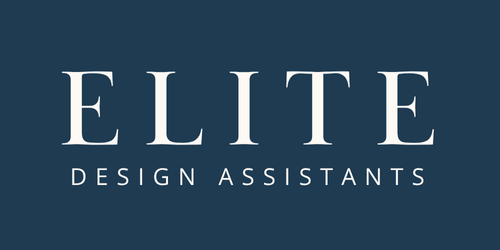MOVE OVER AI: 7 Times Emotional Intelligence Saves Design Dilemmas
/In the wise words of Maya Angelou, "People will forget what you said, people will forget what you did, but people will never forget how you made them feel."
Sure, AI-generated designs and tools are shaking up the interior design world, but nothing replaces the warmth of genuine human connection. We’re not suggesting you toss out your tech—AI can be a fantastic assistant—but pairing it with a healthy dose of emotional intelligence is where the real magic happens. Here are just some of the instances where developing your emotional intelligence (aka emotional quotient or EQ) can elevate your design process, project outcomes, and client relationships:
1. When You Need to Read Between the Lines
Have you ever sat in a meeting where your client says one thing, but you can tell there’s something more behind their words? This is where emotional intelligence really kicks in. It’s not just about listening to what they say—it's about noticing the way they pause, the excitement in their voice when a certain idea comes up, or that little hesitation over a particular style. These subtle cues help you get to the heart of what they really want, even if they can’t quite put it into words.
2. When Dates Have to Be Pushed Back
Ah, the dreaded project delay. No one likes hearing that their timeline just got a little longer, but sometimes it’s unavoidable. Instead of just breaking the news and bracing for impact, your emotional intelligence helps you soften the blow. By empathizing with your client’s frustration and offering clear, reassuring communication, you can help them to stay calm, too, and turn what could be a major setback into just a minor bump in the road.
3. When They Want Luxury on a Tight Budget
The classic scenario: a client has a champagne taste on a beer budget. It’s tempting to roll your eyes, but you can steer the conversation in a more productive direction. Instead of just shutting down their grand ideas, use your empathy to understand what they’re really after. Maybe it’s the feeling of luxury rather than the specific high-end items or brands. Understanding their priorities and what they value most allows you to offer compromises that still feel like a win, keeping the dream alive while staying within budget. That being said, it’s okay (and responsible) to gracefully turn down clients who really aren’t a fit.
4. When You Get Tough Feedback
No one likes to hear that a design isn’t quite hitting the mark, but tough feedback is part of the process. With their precious home and the investment that it is, it’s understandable that they feel on edge when they’re met with disappointment on any level. And you’ve put long days (and nights, let’s be real) into this project, so it’s easy to feel defensive. But your emotional intelligence helps you take a step back, really hear what your client is saying, and make it a helpful conversation. Instead of taking it personally, you can listen, adapt, and refine your ideas, showing your client that you’re committed to bringing their vision to life—even if it means going back to the drawing board.
5. When the Team Dynamics Get Tricky
In any project, different opinions and personalities come into play. Working with a team is great, but it can get a little dicey when personalities clash or communication breaks down. This goes for your in-house team as well as when collaborating with contractors. Your emotional intelligence makes all the difference. By understanding each person’s perspective and keeping the lines of communication open, you can avoid things escalating and keep things constructive (forgive the pun).
6. When You Want to Create a Space That Truly Feels Like Home
Not everyone can design a space that looks straight out of a magazine, but even fewer can also make it feel like home. That takes really getting to know your client—their quirks, their memories, the little things that make them tick. Maybe it’s a particular shade of blue that reminds them of childhood summers or a cozy nook where they can unwind after a long day. This means you’re creating a space that feels like them, a place they’ll love coming back to every single day.
7. When It’s Time to Wow Them with the Reveal
The big reveal is the moment everyone’s been waiting for. And while AI might help you along the way, it’s your EQ that brings the wow factor. You’ve spent the time getting to know your clients, understanding what makes them tick, and designing a space that feels uniquely theirs. When you present them with that finished room and you see their face light up, that’s the real magic. Joining them in the contagious excitement of that special moment is a beautiful thing.
Of course, these are just a few examples of how emotional intelligence can save the day. So, how can you improve your own emotional intelligence? Start by paying more attention to the little things—practice active listening, put yourself in your client’s shoes, and don’t be afraid to reflect on your own reactions. Building EQ isn’t an overnight task, but with a bit of mindfulness and effort, you’ll find that it starts to become second nature. And trust me, your clients (and your designs) will thank you for it.
xx, Danae









